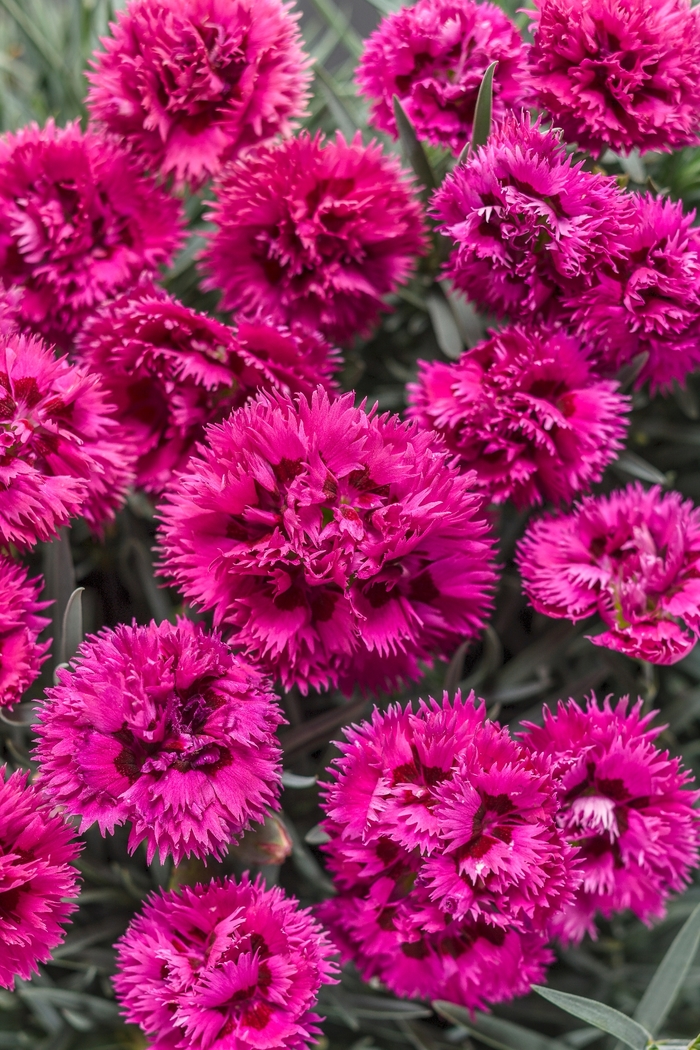« Previous Plant | Next Plant »
Dianthus (Pinks)
Fruit Punch® 'Spiked Punch'
Incredibly vibrant fuchsia pink, double flowers have deep red eyes and heavily serrated petals. The flowers are a little larger than most of the other members of the series at 1½-2 across. Steel blue foliage complements the bright flower color well and remains a focal point even when the plant is not in bloom. Plants have good heat and humidity tolerance. Flowers appear in early summer, and a quick shearing after flowering will encourage them to rebloom in early fall.
- » Colorful carnation-like, double, flowers
- » Use it to edge sunny borders and pathways
- » Heat and drought tolerant
Dianthus grow best in loose, well-drained, neutral to slightly alkaline soils. Lime can be added to the soil if it is naturally acidic to raise the pH. Dianthus can be grown in full sun or part shade, but the foliage will not be as lush and fewer flowers will be produced if it is grown in hot, dry areas. Regular watering during prolonged dry spells will be necessary. However, they are tolerant of short periods of dryness. Do a thorough clean-up in the fall to prevent pest and disease problems, and add a layer of mulch to protect the evergreen foliage. As soon as the weather begins to warm up, remove all of this mulch to prevent crown rot.
- Height
- 6 - 8 in
- Spread
- 12 - 14 in
- Zone
- 4-9
- Color
- Pink
- Categories
- Perennial
- Breeder
- Proven Winners
- Tags
- Attracts Butterflies; Border or Bed; Container; Drought Tolerant; Fragrant; Great Foliage
Check back soon for additional information on Fruit Punch® 'Spiked Punch'.
Dianthus grow best in loose, well-drained, neutral to slightly alkaline soils. Lime can be added to the soil if it is naturally acidic to raise the pH. Dianthus can be grown in full sun or part shade, but the foliage will not be as lush and fewer flowers will be produced if it is grown in hot, dry areas. Regular watering during prolonged dry spells will be necessary. However, they are tolerant of short periods of dryness. Do a thorough clean-up in the fall to prevent pest and disease problems, and add a layer of mulch to protect the evergreen foliage. As soon as the weather begins to warm up, remove all of this mulch to prevent crown rot.
